
Cloud computing is a hot topic currently – but it is a complex subject area with different meanings to different people. In its simplest form, it is a term used for cloud storage/backup services. Others use the term to describe their software-as-a-service (SaaS) offerings – where software applications that would have been run on your own servers are now hosted by a service provider. Finally, and perhaps the most demanding, is CaaS – communications-as-a-service – where a real-time enterprise communications platform is hosted in the cloud.
In the communications technology space that Aculab has been a part of for some 30 years, we are also working towards making the cloud-based communications service a reality. Many thought, perhaps, that it would not be possible to host real-time voice and video communications in the cloud, as they require precise control of network delays, tight jitter tolerances and QoS guarantees. But it is possible, and in fact can work very well.
A key aspect of cloud computing for CaaS architectures is server virtualisation. The communications application that once was run on an in-house server is still used, but you are unaware of the whereabouts or exact make up of the physical hardware on which the programs run. You still need hard disk space, storage and RAM, but these are all virtualised.
In response to customer requests, Aculab recently completed a set of tests of our media processing software product, Prosody S, running on various virtual machines (VM). There are many VMs to choose from – too many in fact for us to certify our product against them all – so our approach was to pick a shortlist of the best performing so that we could make recommendations to our customers. Some could be ruled out fairly quickly as they exhibited poor jitter characteristics, but there were several that performed well.
The best performing setups for Prosody S were those where the virtualisation platform supported para-virtualisation and where the installed guest OS had efficient para-virtualised drivers (examples being Microsoft HyperV and Citrix Xenserver).
As expected, the testing showed that compared to a regular (non-VM) install, there is always a certain reduction in channel count due to the overhead of the hypervisor operation, but with a well chosen hypervisor/OS pairing, this overhead was remarkably small.
Cloud technology is more than capable of supporting real-time voice applications – so expect to hear voices in the clouds soon…
About me
Andrew Nicholson is a Product Manager at Aculab responsible for the Prosody X and Prosody S media processing products. You can contact me here. Alternatively, follow Aculab using our Twitter account.
1. Para-virtualisation – approach (first used by Citrix XenServer, now widely adopted) whereby the guest OS is aware it is running on virtualised hardware, which enables the use of a simpler, leaner hypervisor.





 Technorati
Technorati Del.icio.us
Del.icio.us Slashdot
Slashdot Digg
Digg twitter
twitter

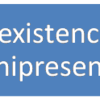

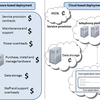
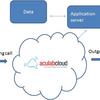
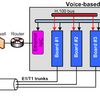
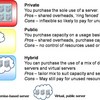
















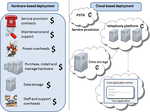








Leave a comment